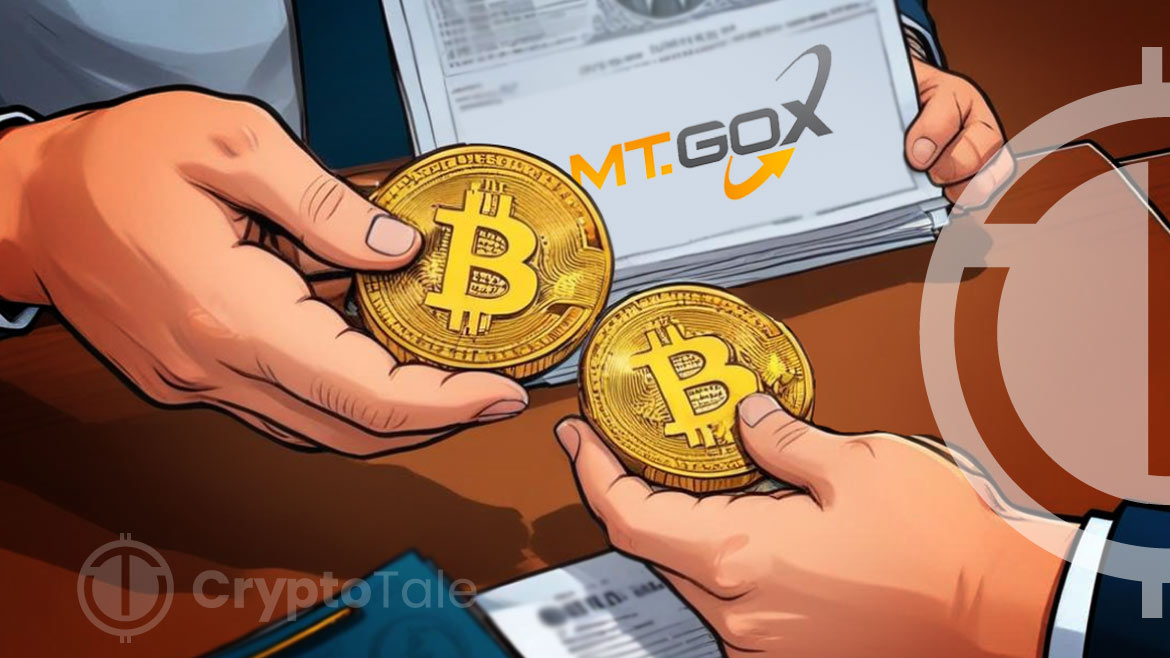Mt. Gox, once the world’s largest Bitcoin exchange, became a cautionary tale in the cryptocurrency market after its infamous collapse in 2014. After a decade-long wait, the exchange had finally begun the task of repaying its creditors. This move involves transferring billions of dollars worth of Bitcoin, which is about 141,686 BTC, to creditors. This repayment process is critical not only to the creditors and Bitcoin but also to the wider crypto industry. In this article, we will give you a clear description of the repayment process and the effects it had on Bitcoin.
Mt.Gox Begins Repaying Creditors
The Start of Repaying Debt to Creditors
On July 5, Mt.Gox announced to the creditors that they had completed all the necessary steps to begin repaying the creditors in accordance with the statement issued on June 24. Later, they transferred more than 47,000 BTC from a cold wallet worth $2.71 billion at that time to an unknown wallet address. They also moved 1,545 BTC to a wallet belonging to Bitbank exchange to support the repayment of $8.5 billion worth of bitcoins to the creditors. Furthermore, at least half of the bitcoins are expected to hit the market in July.
Bitcoin Crash: $683M Positions Wiped Out Amid Mt. Gox PayoutsRehabilitation Plan and Market Impact
The rehabilitation plan was approved in 2021 and was supported by most creditors, with Nobuaki Kobayashi announcing that eligible creditors would receive compensation. After the first debt repayments were made in Bitcoin and Bitcoin Cash, analysts predicted that the creditors who got their BTC back after 10 years would be eager to sell their coins. Since Bitcoin has risen over 8,500% since 2014, some or majority of the creditors would like to take some of the profits they deserve after years of struggle. This could make the already bearish Bitcoin market become even more bearish. But fortunately, the market saw a consolidation phase after the initial repayment instead of a sharp decline.
Subsequent Transfers and Repayments
After two weeks of inactivity since the initial repayment, on July 16, Mt.Gox transferred more than 140,000 BTC to two unknown addresses and a known cold wallet. Nearly 96,000 BTC were transferred to two unknown addresses, and the other 44,527 BTC were sent to a well-known Mt.Gox cold wallet. One of the unknown addresses ending with “BHDct9b” received 42,587 BTC, while another 4,641.24 BTC was transferred back to the cold wallet belonging to Mt.Gox (1Jbez).
The other unknown address is believed to be a Kraken-associated wallet and had received 48,641 Bitcoins. The creditors who use Kraken also received an email stating that their funds have been sent to the exchange and will be distributed within 14 days. According to Arkham Intelligence, after these massive repayments, Mt.Gox still holds 138,985 BTC. Furthermore, with this repayment, over 36% of Bitcoin, which is owed to the creditors, has been distributed.
Remaining Debt and Distribution Progress
Based on the data from Arkham, on June 22, Mt. Gox’s wallet had about 90,300 BTC. On June 23, Mt.Gox transferred another 47,500 BTC to two unknown addresses, bringing the total amount of Bitcoin held in the wallet to around 42,744 BTC. Of the initially transferred 5,100 BTC, nearly 2,871 BTC was sent to an unknown address starting with “1JKMS,” while the remaining were sent to the Bitstamp exchange. The other 42,587 BTC was sent to the address starting with 15yPU.
The next day, Mt.Gox transferred another 37,477 BTC to an unknown wallet, bringing the creditor’s repayments to around 40%. This means that, as of July 24, Mt.Gox had only 60% of the remaining debt. About 5,106 BTC of the 37,477 BTC ended up in an address belonging to Bitstamp and was transferred to the Mt.Gox creditor’s account on 25 July. Furthermore, as of July 25, Mt.Gox still had 90,000 BTC, and from July 5 to the end of July, over 41.5% of the 141,686 BTC were redistributed to the creditors.
The Effects of Mt.Gox Repayment of Bitcoin
Initial Market Reactions
When Mt.Gox moved 47,000 BTC on July 5, Jacob King, a well-known financial analyst, said on his X account that 99% of those on Mt.Gox would sell their coins when they got them. The analysis is based on the fact that Bitcoin’s price has increased over 8,500% during the past 10 years and that most of the creditors of the defunct exchange would like to get some profits. On July 5, the price of Bitcoin fell to $54,092 in response to the Mt.Gox repayment.
Further Market Movements
On July 16, when Mt.Mox transferred over 140,000 BTC, the price of Bitcoin fell 3%, from around $65,000 to around $63,000, causing FUD among investors. After the initial fall in price, the Bitcoin price stabilized above the $60,000 range and showed amazing resilience, with a daily closing of around 1% less since the opening.
According to RunnerXBT, an analyst, only creditors who have weak convictions would be selling their holdings. Ki Young Ju, CEO of CryptoQuant, said on his X account that the FUD caused by Mt.Gox is overestimated and will give smart whales a chance to get Bitcoin at a discount. Furthermore, despite the huge selling pressure caused by Mt.Gox, whales are still accumulating Bitcoin.
Mt. Gox Transfers $3.13B in Bitcoin: Implications for BTC’s Global Asset Rank
Creditor Intentions and Market Stability
Based on the Mt.Gox Insolvency Poll conducted on Reddit, of the 467 participants, about 260 participants planned to continue holding their Bitcoin after the payout. Additionally, only 88 creditors, which account for 20% of the participants, suggested that they would be selling their Bitcoins.
After Kraken distributed BTC to the creditors, there had been no movement from them, suggesting that they weren’t selling their coins but holding them. This was confirmed after there were no major spikes in Bitcoin trading volume on the Kraken exchange. Additionally, even after over 41.5% of the debt was redistributed, there were no movements in the price of Bitcoin, indicating that most of the creditors are keen on holding their coins instead of selling.
Conclusion
The repayment process by Mt. Gox marks a significant milestone in the cryptocurrency world, with substantial amounts of Bitcoin being redistributed to creditors after years of waiting. Despite initial fears of market disruption due to large sell-offs, the Bitcoin market displayed resilience and stability. The cautious approach of creditors by holding their coins, combined with the market’s absorption capacity, has mitigated the anticipated bearish impact. Furthermore, the overall sentiment indicating creditors opting to hold the coins resulted in a managed and steady integration of these repayments into the broader Bitcoin ecosystem.












